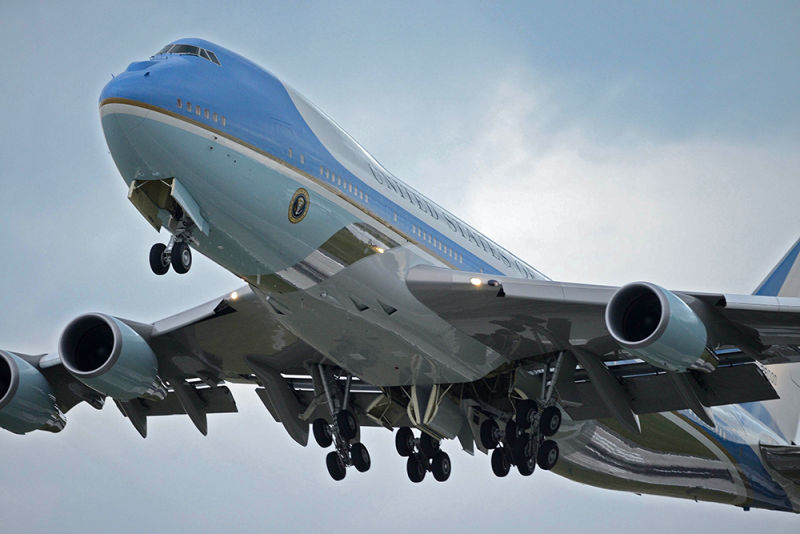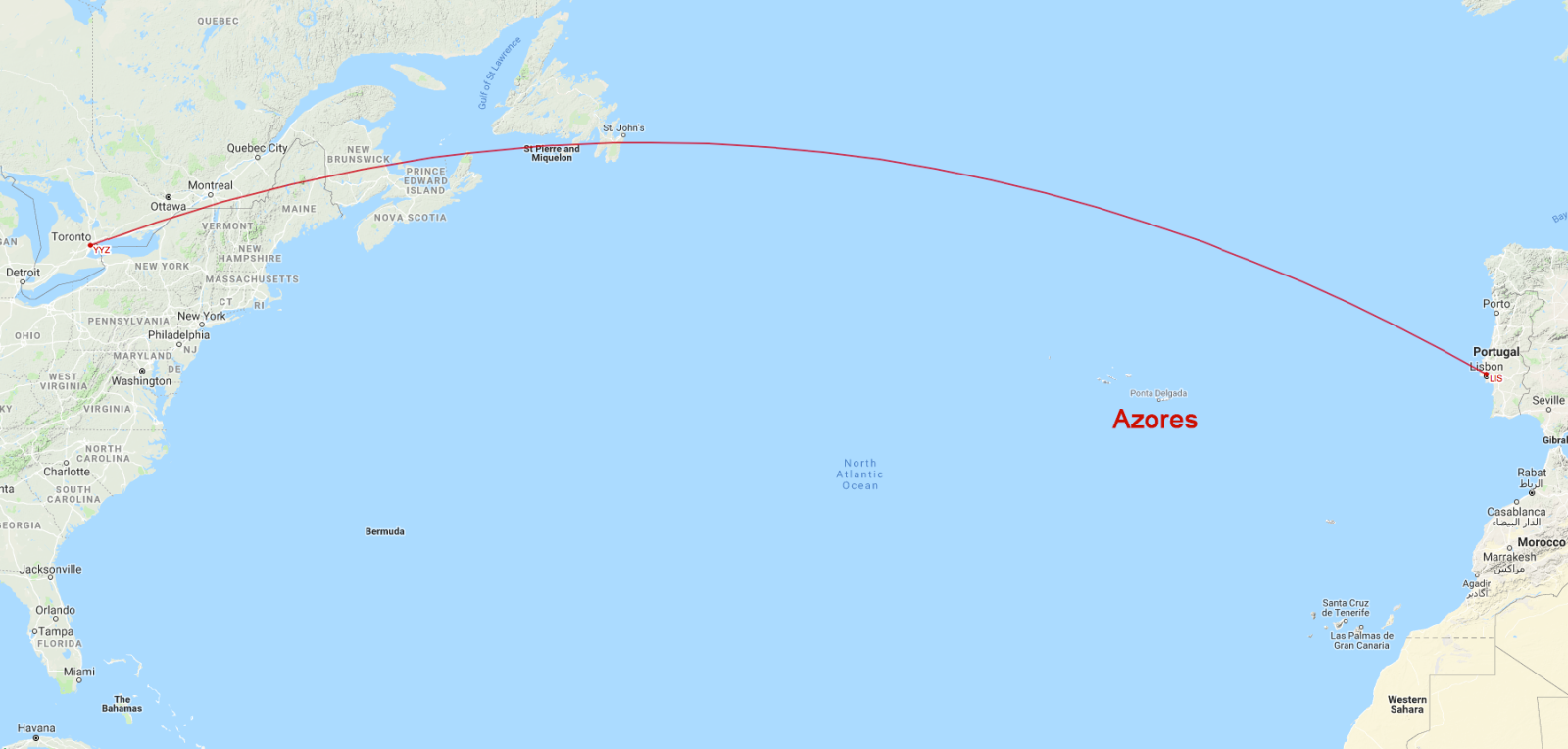Welcome to This Date in Aviation History, getting of you caught up on milestones, important historical events and people in aviation from August 22 through August 25.
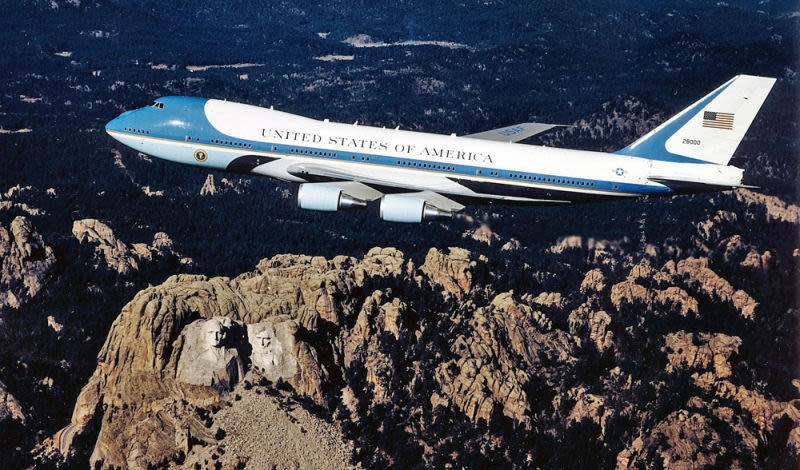
August 23, 1990 – The Boeing VC-25, better known as Air Force One when transporting the President of the United States, enters service. Aircraft that carry world leaders are an important symbol of national power, pride, and technological prowess. In 1959, Soviet leader Nikita Khrushchev arrived in the US in a Tupolev Tu-114, a huge 4-engine turboprop airliner, and his arrival caused quite a stir among the Western press because the plane represented a higher level of aircraft development than the West had thought the Soviets capable of. The history of American presidential air transport began more out of necessity than propaganda, but the modern symbolism of the US President arriving on a large airliner, decked out in the iconic United States livery designed by Raymond Loewy, has since become an important part of showing the US flag in foreign countries.
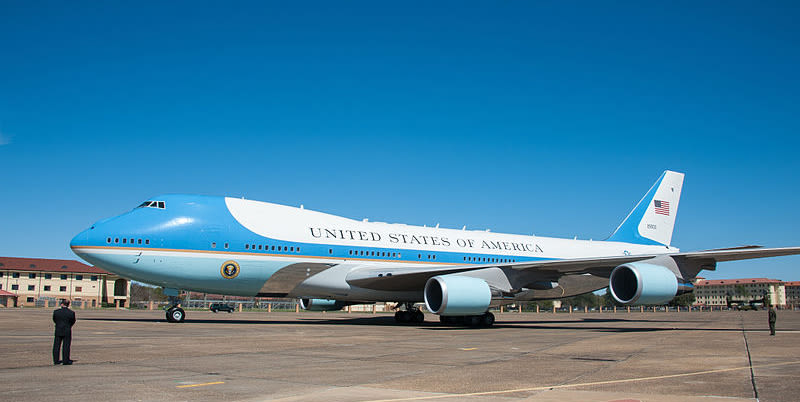
American presidential aviation dates back to 1945, when President Franklin Roosevelt flew on a Douglas C-54 Skymaster named the Sacred Cow to attend the Yalta Conference. Later, President Harry Truman flew in a Douglas DC-6 (VC-118 Liftmaster) named Independence, and President Dwight Eisenhower traveled in Columbine II and Columbine III, both Lockheed VC-121 Constellations. It was during President Eisenhower’s administration that the name “Air Force One” came into use, a call sign created in 1953 to indicate any Air Force aircraft that is carrying the president in order to differentiate it from other civilian aircraft. (If the president is flying in a a US Marine Corps aircraft it becomes Marine One, while a civilian aircraft becomes Executive One.) Eisenhower brought presidential aviation into the jet age when he ordered three VC-137 aircraft based on the Boeing 707, and those aircraft served all following presidents through Ronald Reagan. And though The Boeing jumbo jet first flew in 1969, the Air Force One we know today from the TV news and in movies, a Boeing 747-200B (Air Force designation VC-25), didn’t begin serving the president until September 1990.
In 1985, the Air Force began looking for a replacement for the aging VC-137s currently in service. The new aircraft was required to have at least three engines for added safety, and be capable of flying 6,000 miles without refueling. The only two aircraft that fit those criteria were the Boeing 747 and the McDonnell Douglas DC-10. The Air Force chose the four-engine the 747, and President Reagan ordered two aircraft which were given tail numbers 28000 and 29000. Rather than modify existing airliners, construction began on two purpose-built aircraft, with interiors designed by First Lady Nancy Reagan. The first VC-25 took its maiden flight on May 16, 1987, but the first completed aircraft wasn’t delivered until 1990 during the first term of President George H. W. Bush.
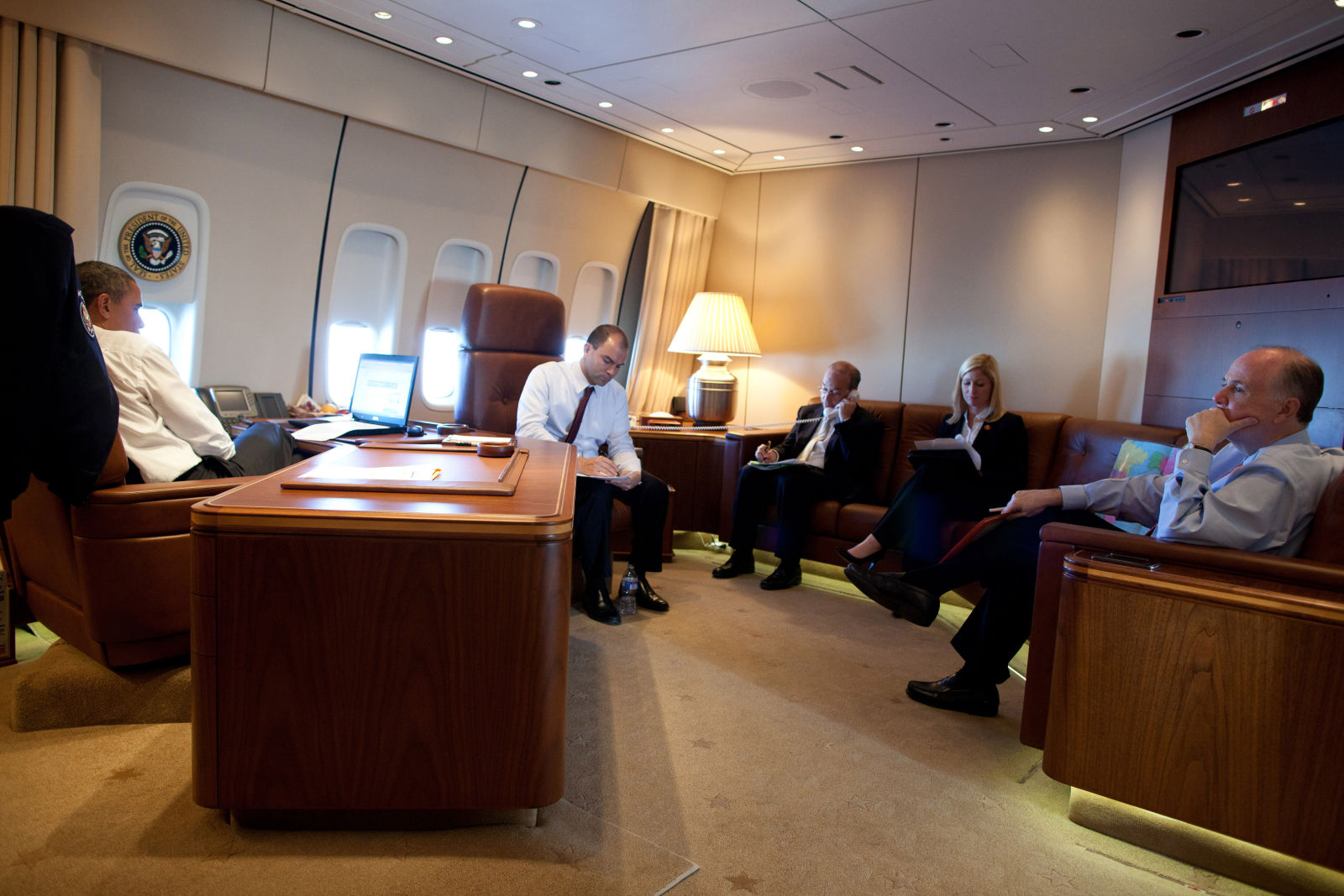
Inside, the VC-25 features a suite of offices and sleeping quarters for the president, as well as other meeting rooms and quarters for the staff. There is also a medical suite, with an operating table, staffed by a doctor and a nurse. In addition to transporting the president, Air Force One can also function as a flying military command center in the event of war or other national emergency and, following the terrorist attacks of September 11, 2001, the VC-25 was modified to give the President the ability to speak to the entire nation from the air. The VC-25 has the capability for aerial refueling and is armed with classified defensive missile countermeasures, though, as popularly shown in the movie Air Force One, it does not have a rear cargo ramp.
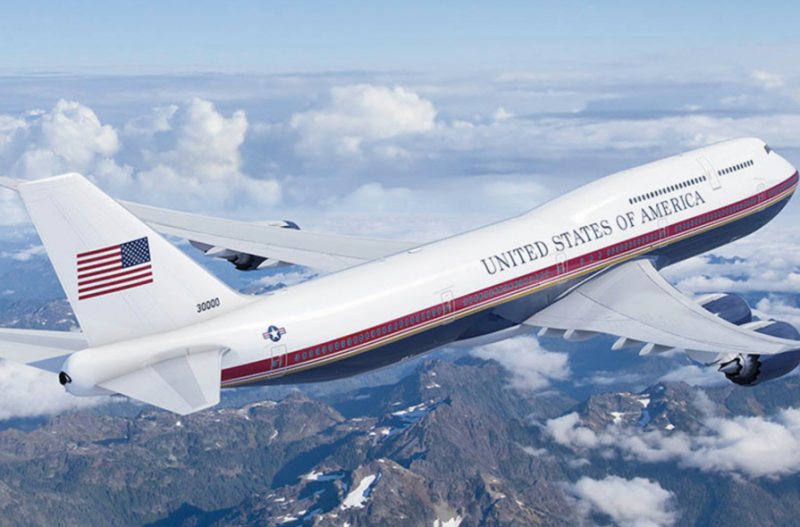
As the current fleet of VC-25s ages, plans are in the works to replace them with a pair of 747-8s, the final iteration of the 747 line. To save money, the Air Force will convert two aircraft that had originally been built for the Russian airline Transaero and had been sitting in storage. Though President Donald Trump initially voiced opposition to the project during his candidacy, he later announced that the iconic Raymond Loewy livery will be replaced with a more predominately red, white, and blue livery, and the change later appeared officially in the Air Force budget. The new Air Force One is slated to enter service in 2024.
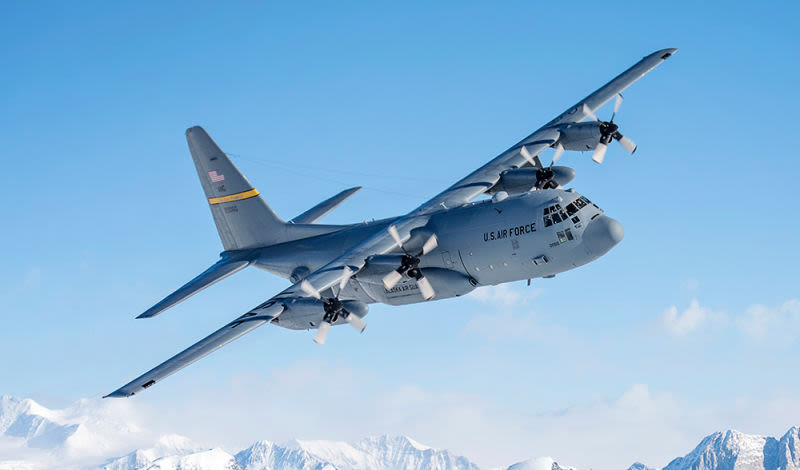
August 23, 1954 – The first flight of the Lockheed C-130 Hercules. During WWII, the true power of the aircraft became clear, not only as a weapon of destruction but also as a tool of logistics and supply. After the war, development of large tactical haulers continued, and piston engines eventually gave way to powerful and more fuel-efficient turboprops. The C-13o, in all of its myriad variants, has become a ubiquitous transport and logistics aircraft for the United States military and many partner nations, and it has seen action in every theater of combat since the Vietnam War. It has become a true workhorse, tackling jobs from troop transport to logistical support to counterinsurgency to reconnaissance to international relief, and the Hercules also exists in gunship variants and as an electronic spy and propaganda platform.
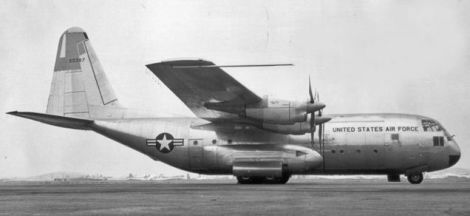
By 1951, the US Air Force discovered that the WWII-era piston-powered airlifters were unsuited to the demands of the Korean War, and not up to the task of supplying the troops in the field. So the Air Force began the process of acquiring a new turboprop transport for the Military Air Transport Service (MATS), which later became the Military Airlift Command (MAC). But rather than develop a new freighter from an existing aircraft, as they had done in the past, the Air Force requirements called for a completely new plane, one designed from the wheels up as a heavy lifter. The request from the Air Force led to the creation of the C-130, the Douglas C-132 (later canceled before any prototypes were built), and the Douglas C-133 Cargomaster, a plane of similar design yet much larger and later built in significantly fewer numbers. The Air Force settled on the C-130, which was powered by four Allison T56 turboprop engines designed specifically for the Hercules. These engines gave the plane a greater operating range than existing thirsty turbojet engines and allowed the C-130 to operate from rough, unimproved and shorter runways. The engines also had enough power that the Hercules could be fully operational with only three engines.
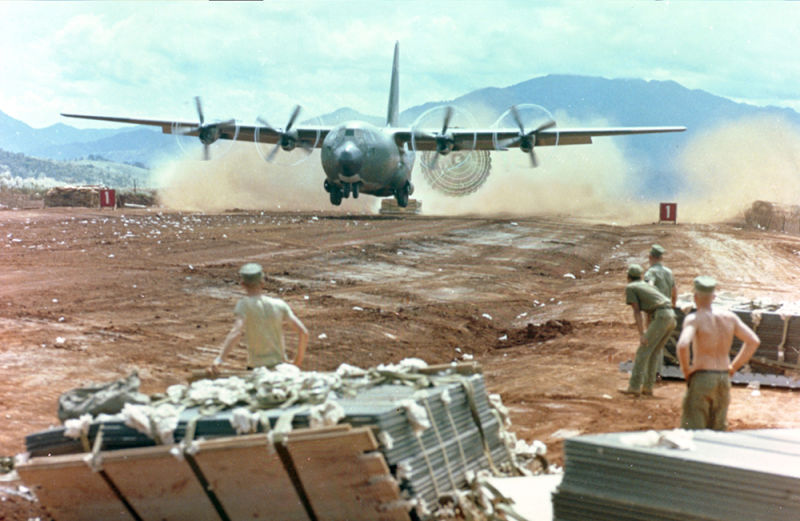
The Hercules, affectionately known as the Herk, set a new standard for modern airlift aircraft design, with a fully pressurized cabin and unprecedented range and capability. The high wing and external landing gear pods allowed for copious internal cargo space, and a rear cargo door and low deck allowed pallets and vehicles to be driven directly on board. After the successful flight of the two prototypes, the Air Force awarded an initial production contract in July 1951, and production of the Hercules, albeit in a significantly upgraded form, continues to this day.
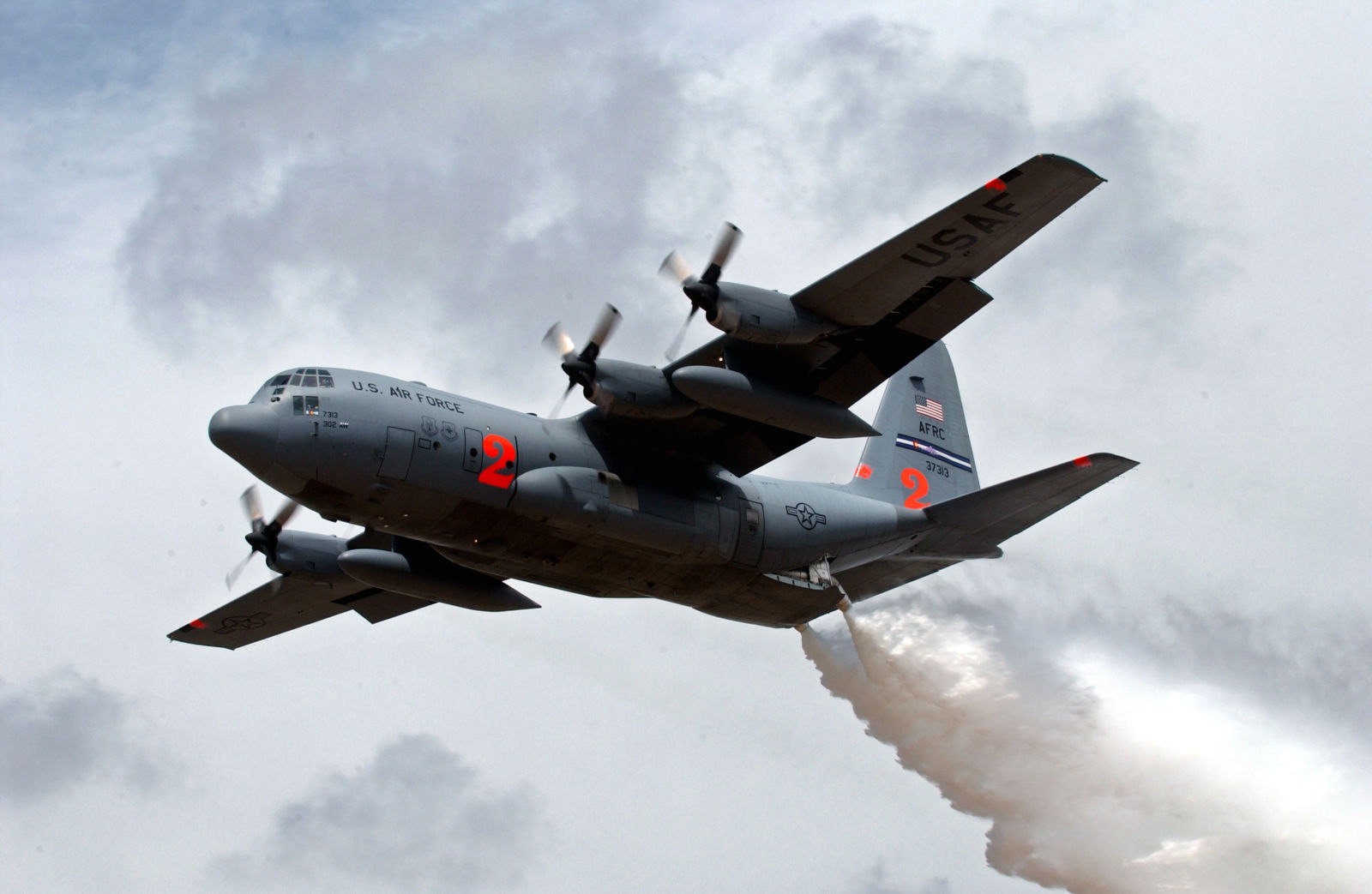
The C-130 entered service with the US Air Force in 1956, followed by Australia in 1958. Herks flew their first combat missions in Vietnam in 1964, and the type has served in every theater of war since. In 1963, a Hercules set the record for the largest aircraft to land and take off from an aircraft carrier when it carried out trials aboard USS Forrestal, a record that remains unbroken.
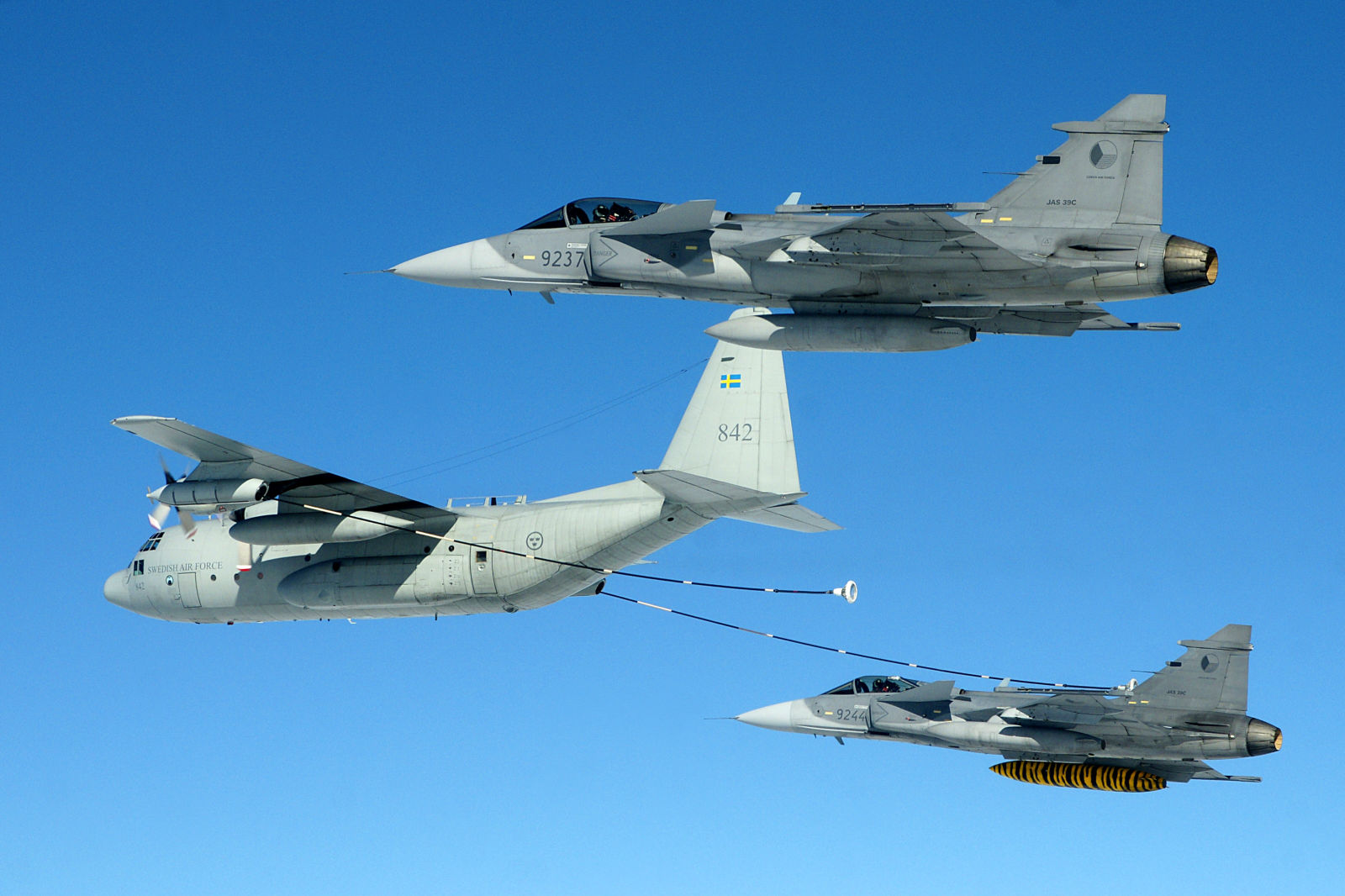
The basic design has allowed for more than 40 variants with upgraded engines and avionics for a host of different mission profiles, both military and civilian, including a gunship version, the AC-130, which is armed with miniguns and cannons for support of ground troops. Lockheed is now producing the C-130J Super Hercules, with the most powerful engines yet, a glass cockpit, and curved scimitar 6-bladed props. Over 2,500 Herks have been produced, and the 50-year-old design shows no sign of being retired any time soon.
August 24, 2001 – Air Transat Flight 236 runs out of fuel over the Atlantic Ocean. Flying across great expanses of open ocean has always been a risky proposition, though certainly less so in the modern era of extreme long-range jet airliners. In the early days of commercial aviation, transoceanic flight was the bailiwick of large flying boats that could land on the surface of the water should an emergency arise far from land. Following the flying boat era, transoceanic flights were restricted to airliners with more than two engines for added insurance against engine failure, until new regulations, known as ETOPS, recognized the reliability of modern jet engines and allowed for flights across the oceans with two-engined airliners.
But any engine requires fuel to run, be it piston, turboprop, or jet, and pilots must make rigorous calculations to prevent an aircraft from running out of fuel before they reach their destination. These calculations must also include extra fuel to allow for holding patterns and diversions to secondary airfields. But if those calculations are done incorrectly, an airliner can become starved of fuel and turn into a giant glider, as happened famously in 1983 to an Air Canada flight known as the Gimli Glider. In that case, crews simply didn’t put a sufficient amount of fuel onboard the airliner. But undetected mechanical faults can also lead to fuel starvation, and the middle of the Atlantic Ocean is a terrible place to see your fuel gauge reading empty.
Air Transat Flight 236 was Airbus A330-200 (C-GITS) service from Toronto, Canada to Lisbon, Portugal. The flight, carrying 293 passengers and 13 crew, took off without incident, but a little more than four hours into the crossing the flight deck crew received a warning for low oil temperature and high oil pressure in the number two Rolls-Royce Trent engine. Twenty minutes later, the crew received a warning for fuel imbalance, and they responded by transferring fuel from the left wing tank to the right wing tank, which was nearly empty. What the crew did not realize was that the fuel imbalance was caused by a leak in the fuel system, and the transfer caused what fuel they had remaining to flow through the leaking fuel line and drain out at roughly one gallon per second. The pilots declared a fuel emergency and decided to divert to Lajes Air Base in the Azores, which lies in the Atlantic Ocean 850 miles west of Portugal.
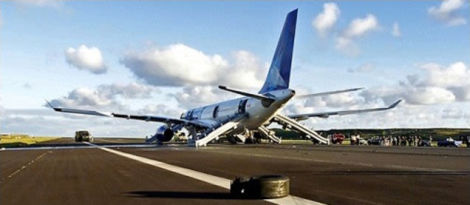
Within ten minutes, and still far from Lajes, both engines flamed out, and the Airbus lost all primary electrical power and main hydraulic power. The captain, Robert Piché, an experienced glider pilot, put all his gliding skills to use as he and First Officer Dirk de Jager worked to control the powerless airliner with minimal controls. Their skill kept the plane in the air for 19 minutes and roughly 75 miles, the longest distance ever flown by an unpowered passenger jet. Military air traffic controllers at Lajes guided the airliner to the runway, and the plane touched down at a speed of 200 knots, resulting in a fire in the braking system that caused the loss of all eight main wheels.
Though the plane landed safely, fourteen passengers and two crew members received minor injuries during the evacuation, and two passengers were seriously hurt. The plane experienced damage to the landing gear and lower fuselage. Investigators traced the cause of the leak in the number two engine to the installation of an incorrect part in the hydraulics system by Air Transat maintenance staff. Pilot error was also listed for the crew’s failure to identify the fuel leak, though Captain Piché was awarded the Superior Airmanship Award by the Air Line Pilots Association. The French aeronautics board also issued a directive leading to a revision in the flight manual to prevent future incidents.
Short Takeoff

August 22, 1989 – The death of Alexander Yakovlev, a Soviet aeronautical engineer and founder of the Yakovlev Design Bureau, where he served as chief designer until his retirement in 1984. Yakovlev was born in Moscow on April 1, 1906 and began his design work as part of the Zhukovsky Air Force Military Engineering Academy. His design bureau produced a large number of fighter aircraft for Russia during WWII, such as the Yak-1, Yak-3, and highly successful Yak-9. Yakovlov served as Vice-Minister of Russia’s Aviation Industry under Joseph Stalin until 1946, and also designed Russia’s first jet powered fighter, the Yakovlev Yak-15.

August 22, 1980 – The death of James McDonnell. Born on April 9, 1899 in Denver Colorado, McDonnell was one of America’s great aviation pioneers and aircraft manufacturers. He began his design career in 1928 by setting up J.S. McDonnell & Associates, where he built his first aircraft. In 1938, McDonnell founded the McDonnell Aircraft Corporation and provided the US with some of its most iconic military aircraft, including the FH Phantom, the US Navy’s first purely jet-powered fighter, and the F-4 Phantom II, one of the era’s greatest all-weather fighter interceptors. His company also built the Mercury and Gemini space capsules. In 1967, McDonell Aircraft merged with Douglas Aviation to form McDonnell Douglas, and the new company went on to create still more great aircraft, such as the DC-10 airliner and the F-15 Eagle. For his life’s work, McDonnell was awarded the National Academy of Sciences Award in Aeronautical Engineering in 1980.
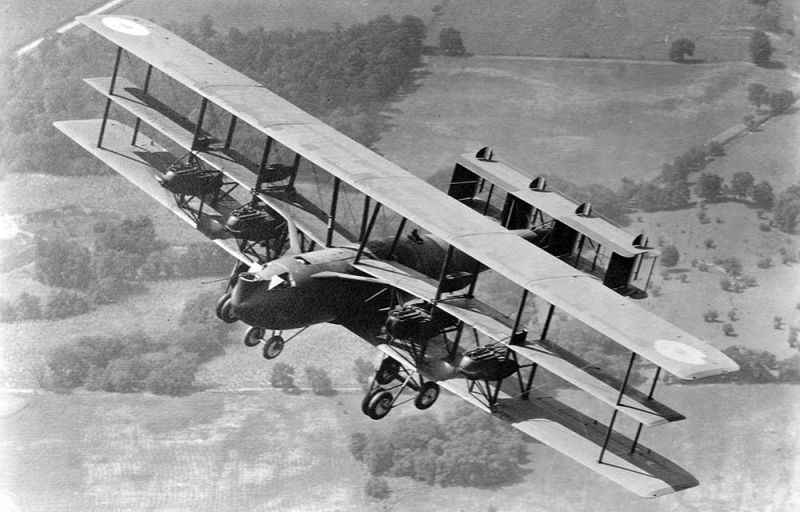
August 22, 1923 – The first flight of the Witteman-Lewis XNBL-1, an early heavy bomber built at the request of strategic bombing proponent William “Billy” Mitchell, who hoped to demonstrate the potential for aerial bombardment by sinking a battleship. The XNBL-1, nicknamed the Barling Bomber after its designer Walter H. Barling, had a wingspan of 120 feet and weighed more than 27,000 pounds. It was designed to carry a single 5,000-pound bomb, and was the largest aircraft built in the US before the arrival of the Boeing XB-15 in 1935. With its considerable weight and the tremendous drag produced by the struts and bracing, the six Liberty L-12 engines (four pulling, two pushing) proved barely adequate to get the giant bomber in the air, and its range was limited to just 170 miles when fully loaded. Though ultimately unsuccessful, the Barling Bomber pioneered the concept of heavy strategic bombardment in the United States, and the single prototype was finally ordered destroyed by General Henry “Hap” Arnold and was burned in 1930.
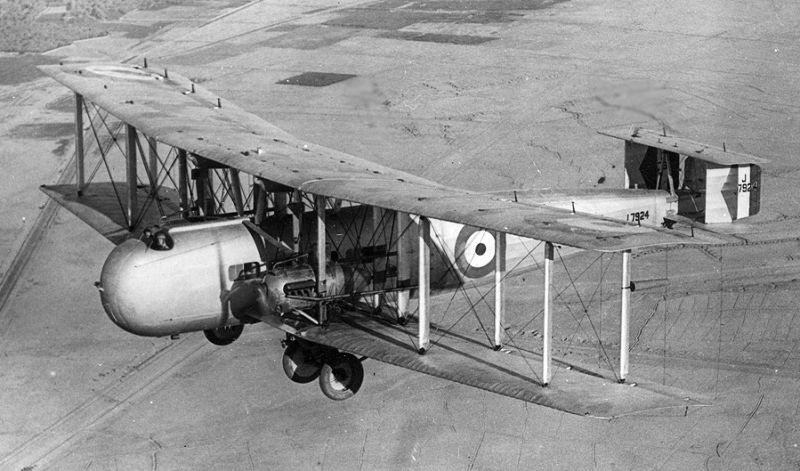
August 22, 1922 – The first flight of the Vickers Victoria, a biplane transport and cargo aircraft developed for the Royal Air Force under Air Ministry Specification 5/20. The Victoria was pieced together from two existing aircraft, with the fuselage coming from the Vickers Vernon troop carrier and the wings coming from the Vickers Virginia bomber. Two Napier Lion W12 engines provided a top speed of 110 mph (later variants received Bristol Pegasus radial engines), and the fuselage could accommodate up to 22 troops. The Victoria entered service in 1926 and played a vital role in the Kabul Airlift in the winter of 1928-1929 during the Afghan Civil War, and provided troop transport services to various hotspots in the Middle East and North Africa. Though considered obsolete by the outbreak of WWII, the Type 264 Valentia variant served as a bomber early in the war, and continued service in Iraq until 1944.
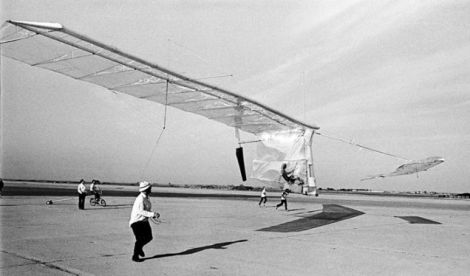
August 23, 1977 – The MacReady Gossamer Condor wins the first Kremer prize for human-powered flight. The Kremer prize was established in 1959 by industrialist Henry Kremer to award pioneers in the realm of human-powered flight. To claim the £50,000 prize, an aircraft had to complete a figure-eight course of one mile while crossing over a ten-foot pole placed at the beginning and the end of the course. The Condor, designed by aeronautical engineer Paul MacCready, was constructed of aluminum poles covered in lightweight plastic, with a gondola underneath housing the pilot. A forward canard provided pitch control. Amateur bicyclist and hang glider pilot Bryan Allen flew the Condor on its prize-winning flight at at Minter Field in Shafter, California. MacCready followed up with the larger human-powered Gossamer Albatros, which flew across the English Channel in 1979.
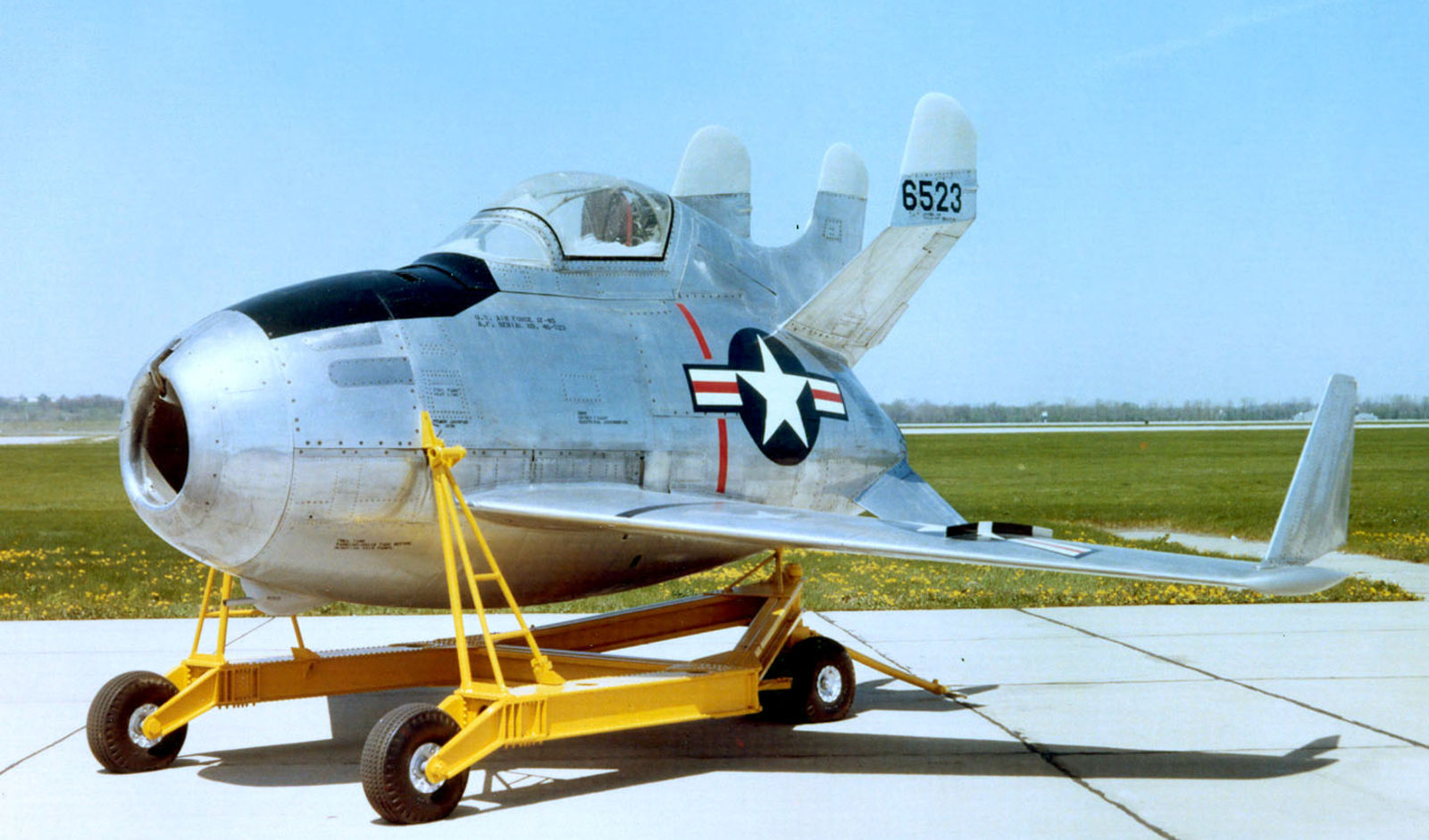
August 23, 1948 – The first flight of the McDonnell XF-85 Goblin. In the early days of transoceanic bombers, fighters were incapable of escorting bombers on their long-range missions. Parasite fighters, first developed to be launched from Zeppelins during WWI, offered a solution, with the fighters carried by a host bomber and released if needed. The diminutive Goblin was designed to be carried by a Convair B-36 Peacemaker and was powered by a single Westinghouse J34 turbojet engine. Though flight tests demonstrated that the Goblin flew well, its performance was inferior to contemporary fighter aircraft. Combined with the development of reliable aerial refueling procedures, the Goblin was canceled in 1949 after the construction of two prototypes.
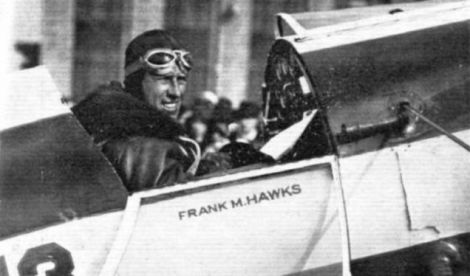
August 23, 1938 – The death of Frank Hawks. Born on March 28, 1897, Hawks served as a flight instructor during WWI and went on to perform as a barnstormer after the war. Hawks made a name for himself during the Golden Age of Flight in the 1930s as a demonstration pilot and racer, famously flying a series of aircraft sponsored by Texaco and setting no less than 214 point-to-point records in the US and Europe. He also starred in the 1937 movie serial The Mysterious Pilot, where he was billed as “The Fastest Man Alive.” After his retirement from competitive flying in 1937, Hawks became the vice president of the Gwinn Aircar Company, where he marketed the company’s novel aircraft. Having ominously predicted that he would die in an airplane, Hawks was killed, along with his mechanic, in the crash of a Gwinn Aircar in East Aurora, New York.

August 23, 1937 – US Army pilots perform the world’s first automatic landing. Landing in bad weather or with limited to no visibility has been a problem since the earliest days of flight. Today, systems are in place that can land an aircraft automatically, or even take off, fly, and land with no pilot intervention. In 1937, Capt. Carl Crane and Capt. George Holloman, for whom Holloman Air Force Base is named) took off with civilian electronic engineer Raymond Stout took off from Wright Field in Dayton, Ohio in a US Army Fokker C-14B. Using five radio beacons that surrounded the field, instruments developed by Crane directed the aircraft to descend and land entirely on its own. Holloman and Crane received both the Mackay Trophy and the Distinguished Flying Cross for the flight. Though the Army did not pursue the autoland system further, the British European Airways was the first to use an autoland system on their Hawker Siddeley Trident airliners in 1965.
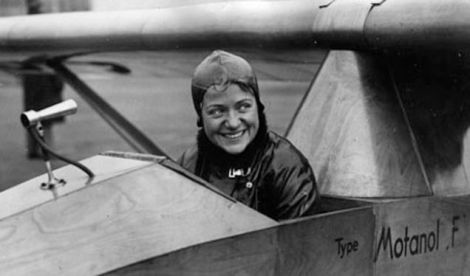
August 24, 1979 – The death of Hanna Reitsch, a German aviatrix and test pilot and the only woman awarded the Iron Cross First Class and the Luftwaffe Pilot Observer Badge for her service during WWII. Born March 29, 1912, Reitsch set over 40 altitude and endurance records flying gliders. She later served as a test pilot on the Junkers Ju 87 Stuka, Dornier Do 17 and Messerschmitt Me 163 Komet rocket plane. Reitsch was the first female helicopter pilot and one of the few to fly the Focke-Achgelis Fa 61, the world’s first fully controllable helicopter, which she famously demonstrated inside the Deutschlandhalle during the International Automobile Exhibition in Berlin in 1938. Reitsch was captured near the end of the war and, after her release, she continued flying gliders and set yet more records.

August 24, 1970 – The first crossing of the Pacific Ocean by a heavy helicopter. The Atlantic Ocean was first crossed by pair of Sikorsky HH-3 helicopters in 1967 by flying from New York to Scotland, making various refueling stops along the way. That feat was followed three years later by two US Air Force Sikorsky HH-53C Super Stallion helictopers that departed from Eglin AFB in Florida on August 15, 1970 and arrived in Da Nang, South Vietnam nine days later. Aided by aerial refuelings along the way provided by HC-130N Hercules tankers, the flight covered more than 8,500 miles.
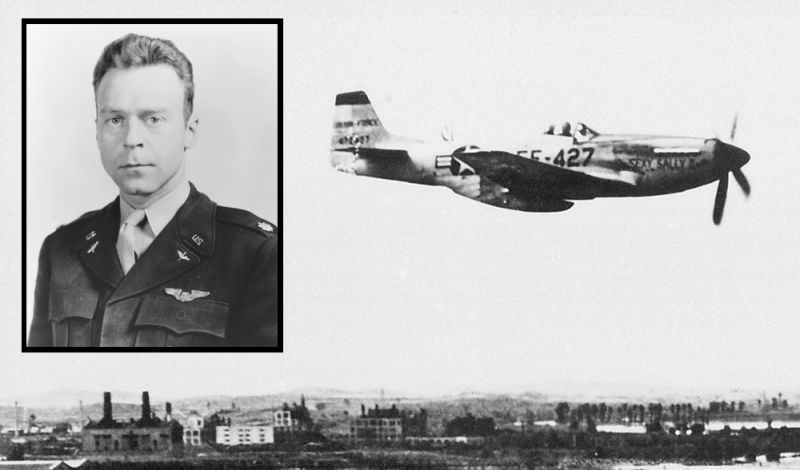
August 24, 1951 – US Air Force Major Louis J. Sebille is posthumously awarded the Congressional Medal of Honor. After flying as a bomber pilot in WWII, Maj. Sebille served as the commander of the 67th Squadron, Jet after the war before transferring to Japan at the outbreak of the Korean War. In the Battle of the Pusan Perimeter early in the war, United Nations forces were pushed back to the South Korean city of Pusan and nearly overrun by North Korean forces. While supporting UN troops in the Perimeter, Maj. Sebille was flying a North American F-51 Mustang and attacked a column of North Korean armored vehicles. When the first of his two 500-pound bombs malfunctioned, Maj. Sebille, gravely wounded by North Korean antiaircraft fire, turned and dove directly into the line of vehicles, firing his machine guns as he struck the column. Maj. Sebille was the first member of the newly-formed United States Air Force to receive the Medal of Honor, and the first of four USAF pilots to be awarded the CMH in Korea, all of whom were killed in action.
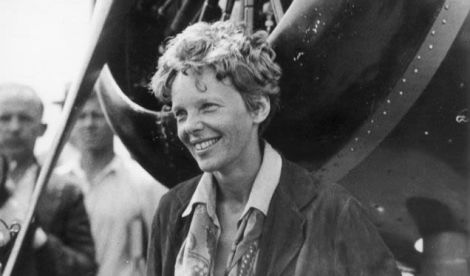
August 24, 1932 – Amelia Earhart becomes the first woman to fly nonstop across the United States. America’s most famous aviatrix, Amelia Earhart set a number of flying records for her day and achieved many firsts for female pilots. Perhaps her greatest feat was her solo flight across the Atlantic Ocean on May 20-21, 1932, but she followed that just three months later with another first when she became the the first woman to fly nonstop across the United States. In doing so, Earhart also set a new transcontinental speed record in her Lockheed Vega 5B by completing the 2,448 mile journey in 19 hours 5 minutes, a record she would break the following year. Earhart, along with navigator Fred Noonan, disappeared on July 2, 1937 while attempting to fly around the world.
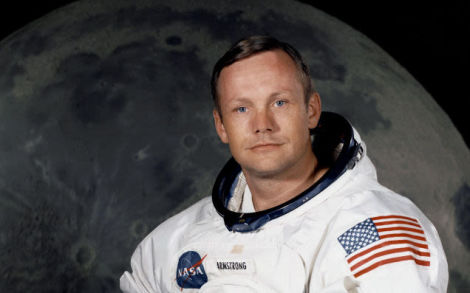
August 25, 2012 – The death of Neil Armstrong. Born on August 5, 1930 near Wapakoneta, Ohio, Armstrong took his first flight at age five on board a Ford Trimotor. After beginning an engineering degree at Purdue University at age 17, Armstrong joined the US Navy, where he flew the Grumman F9F Panther in Korea. Armstrong then served as a test pilot before joining the astronaut program, where he was selected as Command Pilot for the Gemini 8 mission in 1966 which performed the first successful docking in space. In 1967, Armstrong was chosen along with 17 other astronauts to form the crews for the upcoming Apollo missions that would eventually take astronauts to the Moon. Armstrong was tapped as the commander of Apollo 11, the mission that put the first human footprint on the lunar surface. Uttering the famous words, “That’s one small step for [a] man, one giant leap for mankind,” Armstrong set foot on the Moon at 2:56 UTC on July 21, 1969. He retired from NASA following that flight, and became a college professor and businessman before his death in 2012 at age 82.
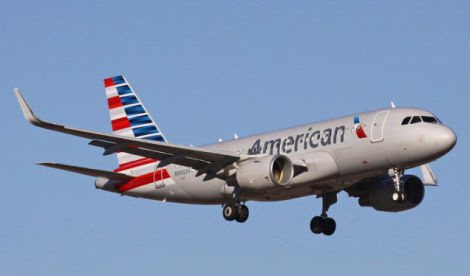
August 25, 1995 – The first flight of the Airbus A319, a narrow-body, short-to-medium-range airliner that was developed from the Airbus A320. A shorter version of the A320, the A319 was developed based on a request by Steven F. Udvar-Házy of International Lease Finance Corporation (IFLC) and was intended to provide direct competition to the Boeing 737. Though it carries slightly fewer passengers than the A320, it has the same fuel capacity, thus the range is extended up to 3,700 nautical miles with the addition winglets (called Sharklets by Airbus). Just under 1,500 A319s have been produced, and it is in service with over 100 operators worldwide.
Connecting Flights
If you enjoy these Aviation History posts, please let me know in the comments. You can find more posts about aviation history, aviators, and aviation oddities at Wingspan.
